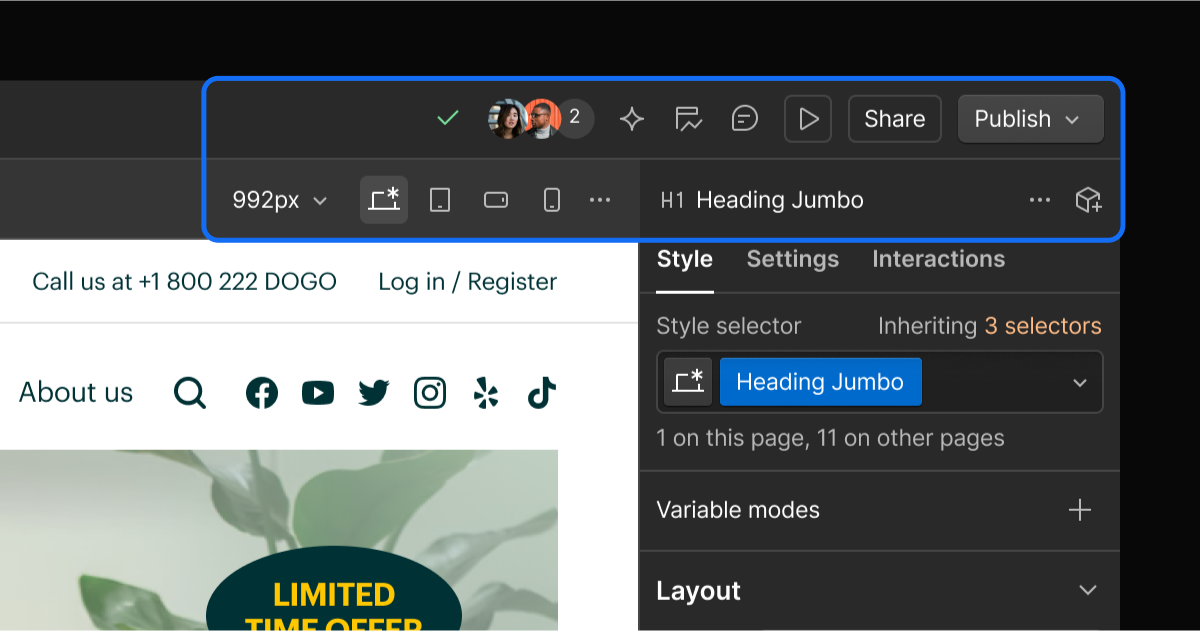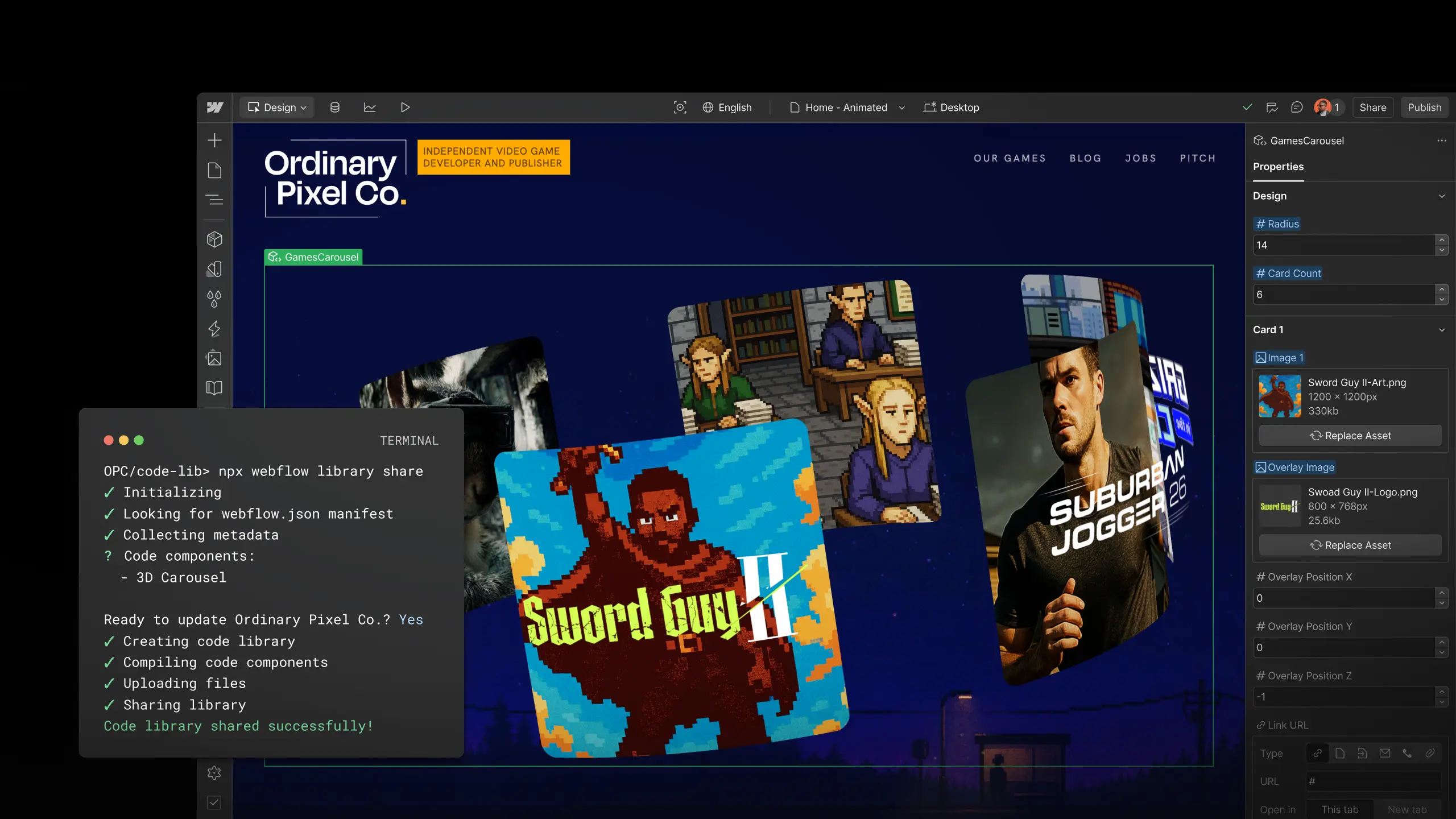Enhancement
Designer
Test designs on a branch faster and safer with branch staging
Webflow's branch staging allows you to publish a branch to its own staging environment to speed up testing and catch issues earlier in the process.
.jpeg)
Today we’re giving Enterprise customers and Enterprise Partners the ability to speed up branch testing and reviews with branch staging. Branch staging allows you to publish any branch to its own staging environment, meaning you’ll be able to test new designs much faster, review custom code fully rendered, and catch issues earlier in the process.

By combining the power of two of our most popular features for Enterprise teams — page branching and staging — branch staging introduces a new workflow for testing designs before deciding whether to merge them into the main site. Let’s take a look at how you might use this with your team.
Best practices for using branch staging with your team
Let’s take a look at how you can leverage branch staging as part of your team’s workflow:
- Work on multiple pages at the same time with page branching. Let’s say your team has three pages on your site that you want to explore some new designs for — Home page, About Us page, and Contact Us page — so you create a branch for all three and start working on the new designs. The beauty of page branching is that you can have three different teammates working on the three different page branches at the same time to speed things up.
- Test and review those pages with branch staging. Once you’re ready to test out the new designs your team can stage each of those three page branches to their own staging environments (at the same time, if you want!), with the ability to share each unique URL with the necessary stakeholders that need to review them.
- Compile feedback with commenting. After your stakeholders review the proposed designs on the staging URL, they can easily share feedback by commenting directly on your build in Webflow. Remember: you can assign anyone the free commenter role to streamline the review process for your team.
- Merge the branches into the main site. As you complete the testing and review process for each staged branch, you can then merge the branch designs into the main site as you prepare to publish to production.
We hope this new workflow is another step towards improving the process of how you build, test, and publish new pages in Webflow. For more details on how to start using this today, check out our Webflow University article. To learn more about how to get access to branch staging or to see a demo, get in touch with our sales team.
What’s next for Enterprise teams
Next up we’ll be working on bringing you:
- Custom staging domains to allow you to own and control your own domain for staging the main site.
- Branch net-new pages so that you can experiment with new page concepts in isolation without fear that your work-in-progress will be accidentally published.
- Edit components on a page branch to make it possible to explore and test a new iteration for an existing component or variable, in the safe environment of a branched page.
- Approval workflows so that you can ensure that proposed changes to the site are reviewed and approved by the right stakeholders before they’re merged or published.
Related updates
Get started for free
Try Webflow for as long as you like with our free Starter plan. Purchase a paid Site plan to publish, host, and unlock additional features.
Try Webflow for as long as you like with our free Starter plan. Purchase a paid Site plan to publish, host, and unlock additional features.




.jpeg)
.jpeg)
.jpeg)




















